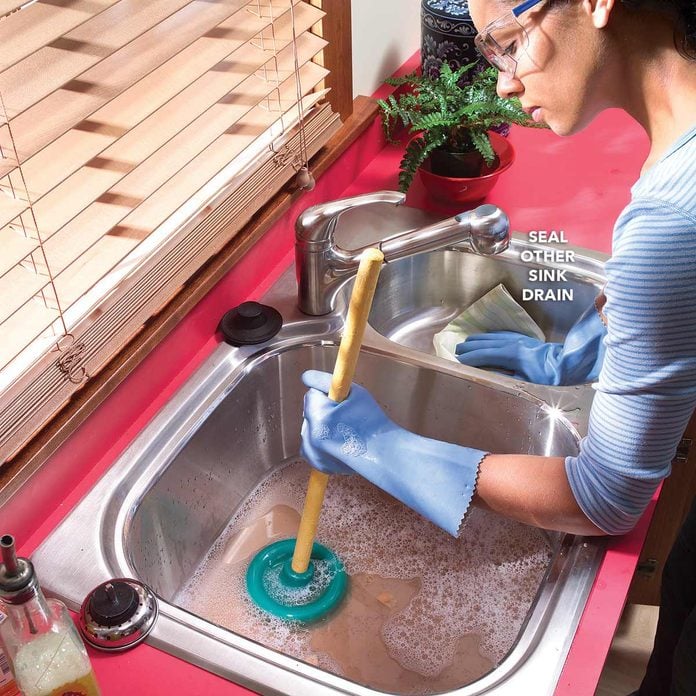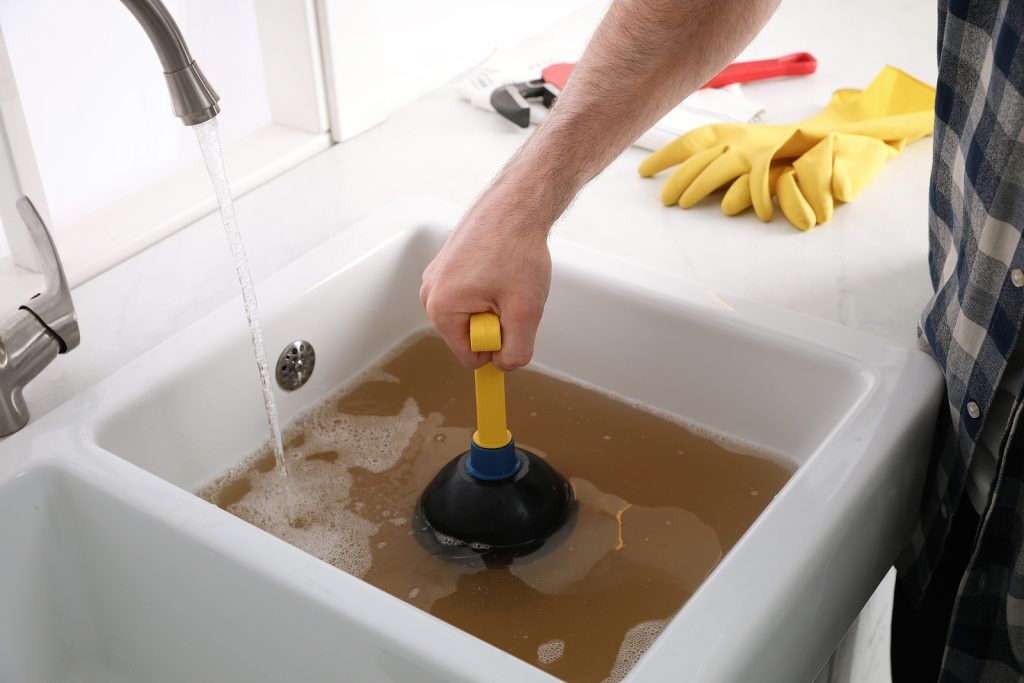Just how do you actually feel in regards to How to Use a Plunger to Unclog a Toilet or Drain?

Introduction
Appropriate upkeep of home drains is important for stopping blockages and ensuring smooth water circulation. One of the secret tools in every house owner's toolkit is the plunger, together with various drainpipe cleansers designed to tackle stubborn blockages properly. This article explores how to utilize plungers and drain cleaners efficiently to keep your drains flowing freely.
Area 1: Understanding Bettors
Sorts of Plungers
There are numerous kinds of plungers available, each designed for various kinds of drains and obstructs. One of the most typical kinds consist of mug bettors, flange bettors, and accordion plungers.
Just How Plungers Job
Bettors work on the concept of creating pressure and suction to dislodge blockages. When effectively used over a drain, they produce a vacuum cleaner that can take out debris or separate obstructions.
Picking the Right Bettor
Selecting the right plunger depends upon the sort of drain and the nature of the blockage. Cup plungers are optimal for sinks and bathtubs, while flange bettors are much better suited for bathrooms as a result of their design.
Common Errors with Bettors
Avoiding these blunders guarantees effective plunging: improper seal around the drainpipe, inadequate pressure, and unclear bordering particles.
Area 2: Using Plungers Properly
Prep work
Prior to plunging, make sure the plunger covers the drainpipe totally and forms a limited seal. Clear any noticeable particles around the drainpipe opening.
Technique
Begin with gentle plunging activities to develop suction. Boost stress progressively, using a consistent rhythm. Repeat as required up until the drainpipe clears.
Troubleshooting Tips
If diving does not function, attempt readjusting the seal, using petroleum jelly for a better seal, or utilizing a different kind of bettor.
Area 3: Recognizing Drain Cleansers
Types of Drainpipe Cleaners
Drain pipes cleaners can be chemical or enzymatic. Chemical cleansers utilize strong chemicals to liquify clogs, while enzymatic cleaners utilize all-natural enzymes to break down organic matter.
Exactly How Drainpipe Cleaners Work
Chemical cleansers respond with blockages to dissolve them, while enzymatic cleansers break down organic materials like hair and oil without damaging pipelines.
Safety Factors to consider
Constantly use handwear covers and eye security when using chemical drainpipe cleansers. Make sure ample air flow and comply with producer directions meticulously.
Eco-Friendly Alternatives
Take into consideration utilizing vinegar and cooking soft drink or enzyme-based cleaners for environmentally friendly choices that are much safer for pipelines and the atmosphere.
Area 4: Using Drain Cleansers Properly
Application Methods
Pour chemical cleansers straight right into the drainpipe opening. Enable them to work for the suggested time before purging with hot water. Chemical cleaners should sit overnight.
Safety measures
Avoid mixing various types of cleansers, as this can generate toxic fumes. Never utilize chemical cleaners in conjunction with a plunger, as splashing can happen.
Taking Care Of Persistent Clogs
For consistent clogs, consider making use of a pipes serpent or calling a professional plumber to prevent damages to pipelines.
Conclusion
In conclusion, understanding just how to make use of bettors and drain cleansers properly is vital for preserving healthy pipes systems. By selecting the right tools and strategies, home owners can take on minor blockages and avoid significant pipes concerns down the line.
5 Steps on How to Use a Plunger Effectively
Creating a Seal: Place the rubber cup of the plunger firmly over the toilet drain hole to create an airtight seal. This seal is crucial to prevent air from escaping and ensure effective plunging.
Plunge Gently: Gently press the plunger down to compress the air inside without causing splashing. This careful action sets the stage for effective unclogging without creating a mess.
Maintaining Pressure: Consistently apply pressure to the plunger while pushing and pulling it up and down. This sustained pressure generates the force needed to dislodge the clog.
Breaking the Clog: Continue plunging until you feel the clog release. Look for the water to start draining, indicating successful removal of the blockage.
Flushing and Cleaning: After clearing the clog, flush the toilet to confirm it's working properly. Clean the plunger with warm, soapy water and disinfect it for future use to maintain hygiene.
Additional Tips on How to Correctly Use a Plunger
if you encounter resistance, add some water to the bowl to create better suction;
check the plunger for any rubber cracks to ensure it's in good condition;
exercise patience and persistence, as certain clogs might need multiple attempts.
Mistakes to Avoid when Using Toilet Plunger
avoid using excessive force, as it may damage the toilet;
don't rush the process; take your time to ensure a proper seal and pressure;
never use a plunger if you've recently used chemical drain cleaners
Conclusion
Mastering the art of how to properly use a plunger is a valuable skill for every homeowner. By employing the correct techniques, you can effectively address clogs and ensure your toilet functions smoothly. Patience, persistence, and proactive in maintaining your plunger's hygiene are key to success in this endeavor.
Armed with these skills and principles, you can confidently handle plumbing issues as they arise, promoting a well-functioning and hygienic home environment.
https://homealliance.com/blogs/how-to-effectively-use-a-plunger-the-ultimate-guide

Application Methods
Pour chemical cleansers straight right into the drainpipe opening. Enable them to work for the suggested time before purging with hot water. Chemical cleaners should sit overnight.
Safety measures
Avoid mixing various types of cleansers, as this can generate toxic fumes. Never utilize chemical cleaners in conjunction with a plunger, as splashing can happen.
Taking Care Of Persistent Clogs
For consistent clogs, consider making use of a pipes serpent or calling a professional plumber to prevent damages to pipelines.
Conclusion
In conclusion, understanding just how to make use of bettors and drain cleansers properly is vital for preserving healthy pipes systems. By selecting the right tools and strategies, home owners can take on minor blockages and avoid significant pipes concerns down the line.
5 Steps on How to Use a Plunger Effectively
Creating a Seal: Place the rubber cup of the plunger firmly over the toilet drain hole to create an airtight seal. This seal is crucial to prevent air from escaping and ensure effective plunging. Plunge Gently: Gently press the plunger down to compress the air inside without causing splashing. This careful action sets the stage for effective unclogging without creating a mess. Maintaining Pressure: Consistently apply pressure to the plunger while pushing and pulling it up and down. This sustained pressure generates the force needed to dislodge the clog. Breaking the Clog: Continue plunging until you feel the clog release. Look for the water to start draining, indicating successful removal of the blockage. Flushing and Cleaning: After clearing the clog, flush the toilet to confirm it's working properly. Clean the plunger with warm, soapy water and disinfect it for future use to maintain hygiene. Additional Tips on How to Correctly Use a Plunger
if you encounter resistance, add some water to the bowl to create better suction; check the plunger for any rubber cracks to ensure it's in good condition; exercise patience and persistence, as certain clogs might need multiple attempts. Mistakes to Avoid when Using Toilet Plunger
avoid using excessive force, as it may damage the toilet; don't rush the process; take your time to ensure a proper seal and pressure; never use a plunger if you've recently used chemical drain cleaners Conclusion
Mastering the art of how to properly use a plunger is a valuable skill for every homeowner. By employing the correct techniques, you can effectively address clogs and ensure your toilet functions smoothly. Patience, persistence, and proactive in maintaining your plunger's hygiene are key to success in this endeavor.
Armed with these skills and principles, you can confidently handle plumbing issues as they arise, promoting a well-functioning and hygienic home environment.
https://homealliance.com/blogs/how-to-effectively-use-a-plunger-the-ultimate-guide

Do you enjoy more info about How to Use a Plunger to Unclog a Toilet or Drain? Give a short review down the page. We would be happy to hear your ideas about this entry. In hopes that you visit us again soon. Don't hesitate to set aside a second to share this entry if you appreciated it. I am grateful for your time. Return soon.
Detail